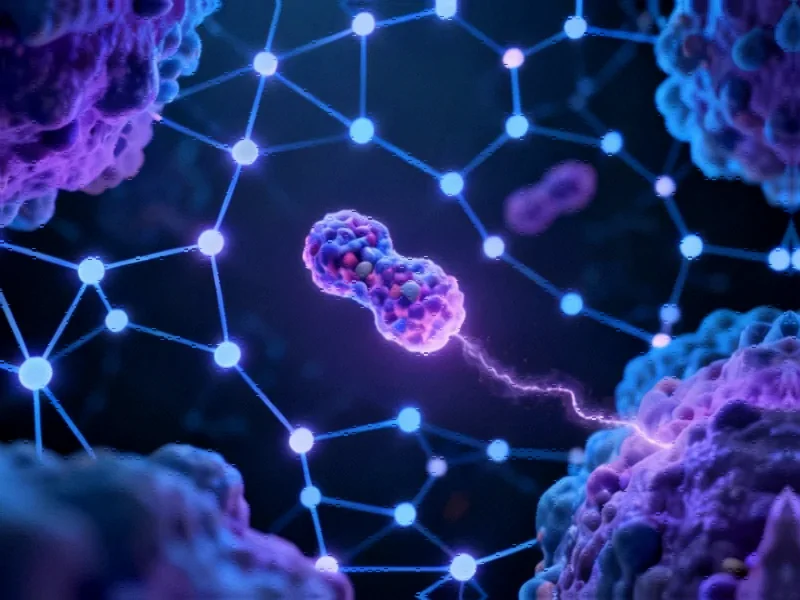Revolutionary Dual-Protective-Layer Photolithography Strategy
Researchers have developed a groundbreaking microlithographic strategy that overcomes long-standing challenges in organic electronics manufacturing. The innovative approach, detailed in Nature Communications, utilizes dual protective layers with complementary properties to achieve unprecedented precision in patterning organic materials while maintaining their structural integrity and functionality.
This universal strategy represents a significant advancement in photolithography techniques that could transform how we manufacture flexible electronics, wearable sensors, and conformable medical devices. The method’s ability to achieve sub-micron feature sizes while accommodating various organic materials makes it particularly promising for next-generation electronic applications.
Core Innovation: Complementary Protective Layers
The heart of this breakthrough lies in the strategic combination of two protective layers with opposite solubility properties. The system employs polyvinyl alcohol (PVA) as an anti-solvent layer, which dissolves in water but resists organic solvents. Complementing this, researchers selected the conjugated polymer DPPT-TT as an anti-water layer, which dissolves in organic solvents but repels water.
This ingenious pairing creates a robust defense system during the photolithography process. The PVA layer effectively shields organic materials from damage during developing and stripping steps involving organic solvents, while the DPPT-TT layer prevents water infiltration that could otherwise compromise pattern precision. The synergistic action ensures precise replication of patterns as small as 0.5 micrometers throughout the entire manufacturing process.
Superior Performance of Conjugated Polymers
The research team conducted extensive comparisons between conjugated and non-conjugated polymers for the anti-water layer function. Their findings revealed that conjugated polymers like DPPT-TT consistently outperformed traditional materials like PMMA. The conjugated polymers maintained 100% pattern yield across thicknesses ranging from 20 to 160 nanometers, while PMMA required significantly thicker layers and never achieved complete reliability.
Finite element analysis simulations provided compelling evidence for this performance disparity. Water molecules took 60 seconds to diffuse through a 50-nanometer DPPT-TT film, compared to just 6 seconds for an equivalent PMMA film. This tenfold improvement in water-blocking capability stems from the intermolecular π-π interactions in conjugated polymers, which enable dense molecular packing and enhanced hydrophobicity.
These findings align with recent technology developments that highlight the importance of material selection in advanced manufacturing processes.
Broad Material Compatibility and Manufacturing Advantages
The strategy demonstrates remarkable versatility in material selection. Beyond DPPT-TT, researchers successfully implemented several other conjugated polymers as anti-water layers, including IDT-BT, P3HT, and PCDTPT, all achieving 100% pattern yield within specific thickness ranges. Similarly, the anti-solvent layer accommodates various water-based materials beyond PVA, including dextran, pullulan, and PEDOT:PSS.
This material flexibility is complemented by significant manufacturing advantages. The approach doesn’t require synthesis of new functional materials or development of specialized photolithography equipment, making it highly accessible for industrial adoption. The method supports wafer-scale production while maintaining 100% yield rates, addressing key challenges in industry developments related to scalable manufacturing.
Practical Applications and Performance Validation
The researchers demonstrated the strategy’s effectiveness with PEDOT:PSS, a conductive polymer notoriously difficult to pattern using conventional methods due to its sensitivity to aqueous and alkaline developers. Using their dual-protective-layer approach, they achieved sophisticated patterns with feature sizes as small as 0.5 micrometers on both rigid and flexible substrates.
Cross-sectional analysis using focused ion beam scanning electron microscopy confirmed the precision of the resulting patterns, showing slight positive trapezoidal sidewalls without lateral etching. This level of control represents the highest precision reported for UV photolithographic organic patterns to date, opening new possibilities for related innovations in microelectronics and sensing technologies.
Implications for Future Electronics Manufacturing
This breakthrough addresses multiple challenges simultaneously: achieving high precision, maintaining material integrity, enabling wafer-scale production, and ensuring cost-effectiveness. The ability to create conformable organic transistors that seamlessly adhere to human skin while maintaining high performance could revolutionize wearable electronics and biomedical devices.
The technology’s compatibility with existing manufacturing infrastructure suggests rapid adoption potential across multiple industries. As researchers continue to refine these market trends in advanced manufacturing, we can expect to see accelerated development of sophisticated organic electronic devices with previously unattainable precision and reliability.
This universal microlithographic strategy represents a significant step forward in organic electronics, potentially enabling new generations of flexible, conformable, and high-performance electronic devices that could transform everything from consumer electronics to medical diagnostics and wearable health monitoring systems.
This article aggregates information from publicly available sources. All trademarks and copyrights belong to their respective owners.
Note: Featured image is for illustrative purposes only and does not represent any specific product, service, or entity mentioned in this article.



